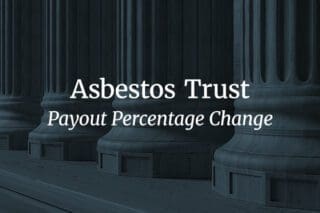
A study published in JAMA Network Open indicates asbestos bans can decrease the incidence of mesothelioma. Researchers arrived at this insight after analyzing decades worth of data from around the world. In the study period, countries with asbestos bans saw their rates of mesothelioma cases fall.
Asbestos exposure causes malignant mesothelioma. This rare cancer has a life expectancy that ranges from about 18 to 31 months with treatment.
This study may impact asbestos laws in the United States. The Environmental Protection Agency (EPA) recently proposed a rule that tightens these regulations. Officials have not yet finalized the rule. The data from JAMA Network Open may push EPA regulators closer to a complete asbestos ban.
Study: Global Data Shows Asbestos Bans Work
Researchers set out to determine how malignant mesothelioma incidence changed over time. They analyzed case data collected between 1990 and 2017. This included data from 195 countries and territories. Some of these countries banned asbestos use during the study period.
Researchers found the following key results:
- More than 86% of patients diagnosed with mesothelioma were 50 years or older.
- The portion of patients diagnosed at 70 years of age or older increased from 37% to 45% from 1997 to 2017.
- Country-specific rates of mesothelioma decreased about 20 years after enactment of total asbestos bans.
The results also show asbestos bans do not decrease mesothelioma rates immediately. This may be partially explained by mesothelioma’s long latency period. Mesothelioma can take 50 years or more to develop after asbestos exposure. This means people exposed to asbestos before a ban could still develop cancer many years later.
Thus, it makes sense that mesothelioma rates may take years to decline in the wake of an asbestos ban. Researchers observed that most countries with bans did eventually see mesothelioma rates decline. In some cases, the decline took 20 to 30 years to materialize.
These results provide actionable information for governments aiming to decrease mesothelioma incidence. The study also provides a path forward for these governments: enact stricter asbestos regulations immediately.
“Governments and global medical institutions may consider implementing stricter asbestos controls immediately and developing targeted management strategies accordingly.”
– Zhai et al in JAMA Network Open
Fate of Proposed Partial Asbestos Ban Still Unknown
Mesothelioma advocates hope regulators will seriously consider this information. For the United States, this could affect the EPA’s proposed chrysotile asbestos rule. The rule amounts to a partial asbestos ban. Incomplete bans may address current and future asbestos exposure. But they often fail to address historic asbestos use and ongoing exposure.
For example, the originally suggested rule only affects the use of chrysotile asbestos. This form of asbestos is currently used in various products including brakes and gaskets. The proposed chrysotile rule could be a step in the right direction to limit asbestos exposure. But it still falls short of a complete ban.
The rule has not been finalized. The docket is set to stop accepting public comments mid-June. Individuals hoping to see stricter regulations may be able to speak up before that happens.




